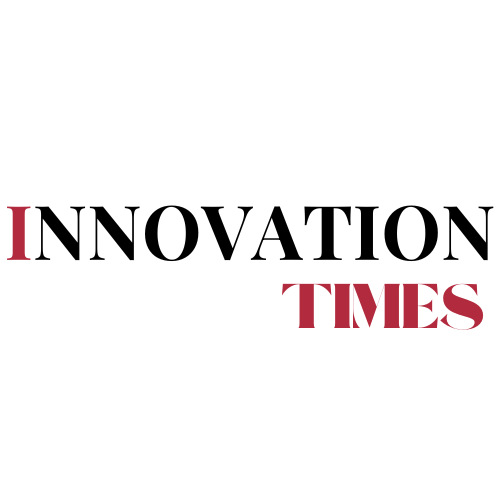Table of Contents
For decades, the United States has been a global leader in innovation, technological advancement, and scientific breakthroughs. However, a growing crisis threatens to undermine this dominance. The country is facing an acute shortage of skilled workers in science, technology, engineering, and mathematics (STEM) fields, putting the future of its economy and technological leadership at risk. Industries that once thrived on a steady supply of top-tier professionals are now struggling to fill critical positions, leading to heightened concerns about the nation’s ability to compete in a rapidly evolving global market.
The situation is dire, with the Bureau of Labor Statistics projecting that the U.S. will need at least 1 million additional STEM professionals by 2033. As industries such as artificial intelligence, cybersecurity, biotechnology, and aerospace expand at an unprecedented rate, the demand for skilled professionals is far outpacing the supply. This widening gap has left businesses scrambling to recruit talent, pushing companies to explore international hiring solutions to sustain growth and innovation.
The Growing Reliance on Foreign Talent to Fill STEM Jobs
With the domestic talent pool failing to meet demand, U.S. companies are increasingly turning to foreign workers to bridge the gap. The H-1B visa program, introduced in 1990, has become a crucial tool for companies looking to hire skilled professionals from abroad. Under this program, 65,000 visas are issued annually, with an additional 20,000 reserved for individuals who have earned advanced degrees from U.S. institutions. Despite these allocations, the demand for foreign talent far exceeds the available slots.
In 2025, U.S. Citizenship and Immigration Services (USCIS) received a staggering 470,000 applications for H-1B visas, highlighting the urgent need for skilled professionals in fields such as software engineering, data science, and advanced manufacturing. Tech giants including Amazon, Google, Meta, and Microsoft rely heavily on the program to attract top-tier global talent, reinforcing the role that foreign professionals play in sustaining the U.S. economy.
Despite recent layoffs in the tech sector, companies are still actively seeking specialized workers with expertise in high-demand areas such as artificial intelligence, cloud computing, and semiconductor design. The hiring landscape underscores a paradox: while some roles become redundant due to automation and industry shifts, the need for cutting-edge skills continues to grow, making STEM professionals more essential than ever.
The H-1B Visa Process is Expensive and Complex
While the H-1B visa offers a pathway for foreign professionals to contribute to the U.S. economy, the process is fraught with challenges. Visa holders are required to renew their status every few years, incurring high legal fees and bureaucratic delays. Many foreign workers struggle with the uncertainty surrounding their visa status, adding significant stress to their professional and personal lives.
A Virginia-based H-1B visa holder recently described the frustration of navigating the renewal process, stating, “I’m not sure if people in the U.S. truly understand the level of headache that people who are on H-1 have to go through. Every three years, we need to get our visa renewed, pay thousands of dollars in legal fees, and hire attorneys just to continue working in the country.”
Beyond the financial burden, visa holders often face restrictive policies that prevent them from switching jobs freely, limiting their career mobility. The risk of visa denial during renewal further complicates matters, leaving thousands of highly skilled professionals in limbo and discouraging many from pursuing long-term careers in the U.S.
Calls for Reform Amid Workforce Challenges
The growing reliance on foreign talent has sparked debates about the future of U.S. immigration policies and the need for reform. Critics of the H-1B program argue that some companies misuse it to hire foreign workers at lower wages, undercutting opportunities for American professionals. However, supporters emphasize that high-skilled immigration fuels innovation, drives economic growth, and strengthens the country’s global competitiveness.
To address concerns about wage disparities and fairness, lawmakers have proposed reforms aimed at eliminating the lottery-based selection system and replacing it with a merit-based approach that prioritizes the highest-skilled applicants. Additionally, setting higher salary thresholds for H-1B workers could prevent wage suppression and ensure that companies hire foreign professionals based on expertise rather than cost savings.
Beyond visa policy changes, industry leaders are urging greater investment in STEM education and workforce development. Expanding access to computer science programs, funding scholarships for underrepresented students, and strengthening partnerships between universities and tech companies are among the strategies being explored to bolster the domestic STEM pipeline. Without significant investment in education and skills training, the U.S. risks falling behind in the global race for technological dominance.
A Crossroads for the U.S. Workforce
The skilled worker shortage in STEM fields is more than just an economic challenge—it is a defining issue that will shape the future of innovation and technological progress in the U.S. Without immediate action, the nation risks losing its edge in industries that drive global influence and economic growth.
For skilled professionals looking for opportunities in the U.S., the demand for talent remains high, despite the challenges in securing work authorization. Whether through visa reforms, education initiatives, or expanded workforce training, the coming years will be pivotal in determining how the U.S. addresses its critical labor shortages.
Stay Updated on Global Workforce Trends
As immigration policies evolve and opportunities shift, staying informed is essential for those looking to navigate the international job market. Stay ahead with the latest news on global innovation, leadership, entrepreneurship, business, and tech.
Join us on WhatsApp or Telegram for real-time updates. Have a report or article? Send it to report@theinnovationtimes.com. Follow us on X (Twitter), Instagram, LinkedIn, YouTube, Pinterest, and Facebook for more insights and trends.



